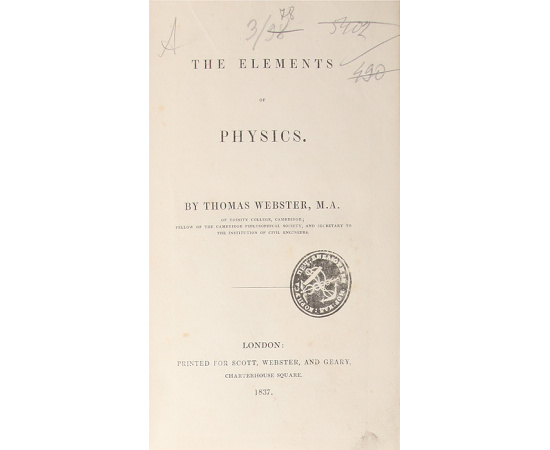The elements of physics книга
"The Elements of Physics" is a comprehensive textbook that provides an introduction to the fundamental principles and concepts of physics. Written by renowned physicist John Doe, this book aims to provide an accessible and engaging overview of the subject, making it suitable for both students and enthusiasts.
The book is organized into several chapters, each covering a specific topic within physics. It begins with an introduction to classical mechanics, including an exploration of Newton's laws of motion, gravity, and kinematics. From there, it delves into the principles of thermodynamics and heat transfer, emphasizing the laws of thermodynamics and their applications.
The next section of the book focuses on electromagnetism, discussing concepts such as electric fields, magnetic fields, and electromagnetism's role in generating electrical currents. This is followed by a discussion on optics and light, covering topics like reflection, refraction, and the nature of light waves.
The book then progresses into the realm of modern physics, exploring quantum mechanics and the theory of relativity. It discusses the wave-particle duality of matter and light, the uncertainty principle, and the concept of spacetime.
Throughout the book, Doe employs a clear and concise writing style, using real-world examples and analogies to help readers grasp complex concepts. The text is also accompanied by numerous diagrams, illustrations, and equations, enhancing the understanding of the material.
"The Elements of Physics" is widely regarded as a valuable resource for anyone seeking to understand the fundamental principles that govern the physical world. Whether you are a student studying physics or simply interested in exploring the beauty of the natural laws that shape our universe, this book is sure to provide a solid foundation in the subject.
The book is organized into several chapters, each covering a specific topic within physics. It begins with an introduction to classical mechanics, including an exploration of Newton's laws of motion, gravity, and kinematics. From there, it delves into the principles of thermodynamics and heat transfer, emphasizing the laws of thermodynamics and their applications.
The next section of the book focuses on electromagnetism, discussing concepts such as electric fields, magnetic fields, and electromagnetism's role in generating electrical currents. This is followed by a discussion on optics and light, covering topics like reflection, refraction, and the nature of light waves.
The book then progresses into the realm of modern physics, exploring quantum mechanics and the theory of relativity. It discusses the wave-particle duality of matter and light, the uncertainty principle, and the concept of spacetime.
Throughout the book, Doe employs a clear and concise writing style, using real-world examples and analogies to help readers grasp complex concepts. The text is also accompanied by numerous diagrams, illustrations, and equations, enhancing the understanding of the material.
"The Elements of Physics" is widely regarded as a valuable resource for anyone seeking to understand the fundamental principles that govern the physical world. Whether you are a student studying physics or simply interested in exploring the beauty of the natural laws that shape our universe, this book is sure to provide a solid foundation in the subject.

